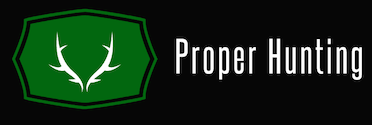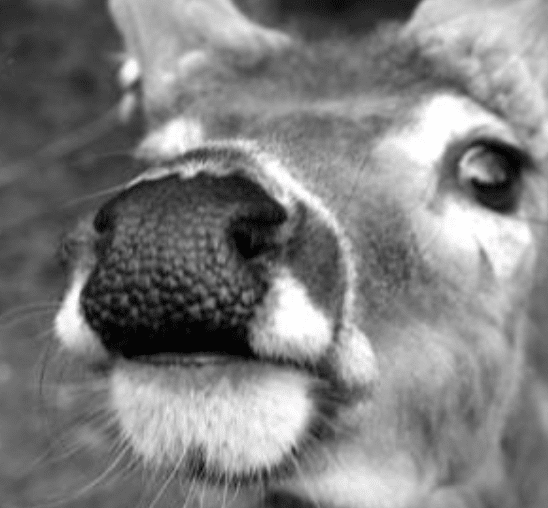The sense of smell among members of the deer family is legendary. In fact, it’s hard for humans to grasp. But recent research into the sense of smell of elk and whitetails finally puts some numbers to it.
How far can a deer smell? They Can Smell You from a Half-Mile away
For more than 50 years Leonard Lee Rue III has observed, researched, photographed and written about deer. He has done more to educate the American public and hunters on the ways of the whitetail than anyone.
How do you defeat the whitetail’s awesome nose? You can’t. You can only stay in the game by playing the wind and practicing good scent control on every hunt.
You ought to spend as much time as possible on your hunting property year-round, working on the habitat, scouting and hunting. Every day you’re out there, monitor the wind directions at morning, midday and afternoon. Mark the currents on a map or in a journal. Over time you’ll see the common winds that accompany various weather patterns at different times of the year. That is vitally important info because the majority of the trees you pick for stands will be based on the prevailing winds in your area.
Most hunters focus on where deer will come in on the upwind side of stands. That is surely important, but it is not enough. When picking a tree, you need to determine where to put your wind, and hence your scent, so you’ll alert as few deer as possible. If a mature buck circles in somewhere downwind of your stand and smells you, he might just melt away into the brush. But an ornery old doe might stand out there and blow like crazy, alerting every deer within a half-mile that she smells a rat. Either way your hunt is probably ruined.
Always try to set up and float your wind over an area that’s not going to see a lot of deer traffic. For example, let your wind scent drift away from your stand and out into a pasture field, or maybe out over a deep creek that deer probably aren’t going to cross. I sometimes set a stand slightly upwind of a steep hill or bluff that deer won’t or can’t walk up on the downwind side.
Determining the best wind for a stand definitely involves trial and error. You might look at a map or aerial and say, “Okay, a southeast wind will work best there.” But until you go in and sit the stand several times, you don’t really know if a southeast is best or even adequate. You have to study the unique topography of an area because ridges, bluffs, draws and other terrain features can dramatically affect wind direction. You also need to observe the overall deer movement throughout an area as it relates to various common winds.
Most hunters concentrate on wind direction, but they often neglect wind speed. Big mistake. I have treestands on the tops of ridges that are perfect for high-pressure mornings with little wind. I also have sets in draws and hollows that are just right for strong northwest winds that kick up after a front blows through. I’ve got a great stand on the edge of a small food plot down in a bottom where, if the wind is above 5 mph or so and stays that way throughout the afternoon, I’m OK.
But if I try to hunt that stand on a dead-calm evening when the wind drops to nil at dusk, the cool thermals start shifting and falling, spreading my scent all over the bottom and messing me up big time. You’ve got to keep all that in mind to beat a buck’s super sniffer.
Fortunately, we know a lot more than ever about how deer smell. Let’s take a look at four things that give members of the deer family their amazing ability to smell what’s around them.
The Long Snout
Members of the deer family and predators need their sense of smell to survive, so they are equipped with far more olfactory receptors than those animals that do not rely on their sense of smell. The long snout creates more room for special nerve cells that receive and interpret smells. It’s estimated that humans have about 5 million of these olfactory receptors, while members of the deer family, including elk and moose, have about 300 million. Bloodhounds have about 220 million.
The Specialized Brain
The area of the brain dedicated to interpreting scent is larger in deer than in humans. The drawing of air across all those receptors in the snout sends signals to the primary olfactory cortex, which is in the temporal lobe of the brain.
Because this part of the brain is larger in animals that use their nose for survival, this creates an ability to interpret the smells that’s added to their ability to pick up all those smells with those 300-million receptors. This would suggest that using a cover scent of any kind would be futile, because a deer can simply sort the smells out.
A hunter using deer urine to cover his scent smells like a hunter and deer urine to a deer, not just one or the other. While cover scents have little effectiveness, the ability to reduce (not necessarily eliminate) human scent with antibacterial soaps, detergents and sprays, anti-microbial Scent Killer, and carbon is proven science. The science of the deer’s smell would suggest that reducing human odor is worth the trouble, attempting to cover it up is not.
Smelling in Stereo
Members of the deer family also have broader lateral nostrils which allow them to detect smells directionally. Moose have the most pronounced application of this. This allows the animals to determine the direction of the source of the smell more readily. This is called “stereo olfaction,” and it allows members of the deer family to more quickly determine the source of danger.
You may have noticed a deer raise its head as it is smelling the air. The deer is flaring its nostrils while drawing air across the olfactory receptors in its snout. The animal can quickly determine what it’s smelling and the direction it’s coming from.
They Live by Their Nose
The fourth thing that helps members of the deer family survive is simply an increased awareness of the smells around them. We humans might not pay much attention to the scents coming in through our nose until it overpowers our other senses. We don’t think about smells much; until someone hands you a child with a dirty diaper, or you walk into a restaurant where they are frying bacon.
Contrast that to the life of a deer, which is focused on the smells coming through the nose 24-7. The other four senses take a back seat to the importance of smell in their everyday lives. We humans can increase our awareness of the smells around us just by paying attention to them. Have you ever smelled a rutted up buck before you saw him? How about a herd of elk? Using our ability to smell what’s around us is a skill that can be developed. After all, we are predators at heart.
While you are here, you may want to check out:
- 5 Best Places To Hang A Tree Stand
- Meet Greg, the Author of Proper Hunting
- Best skinning knives of the year!

